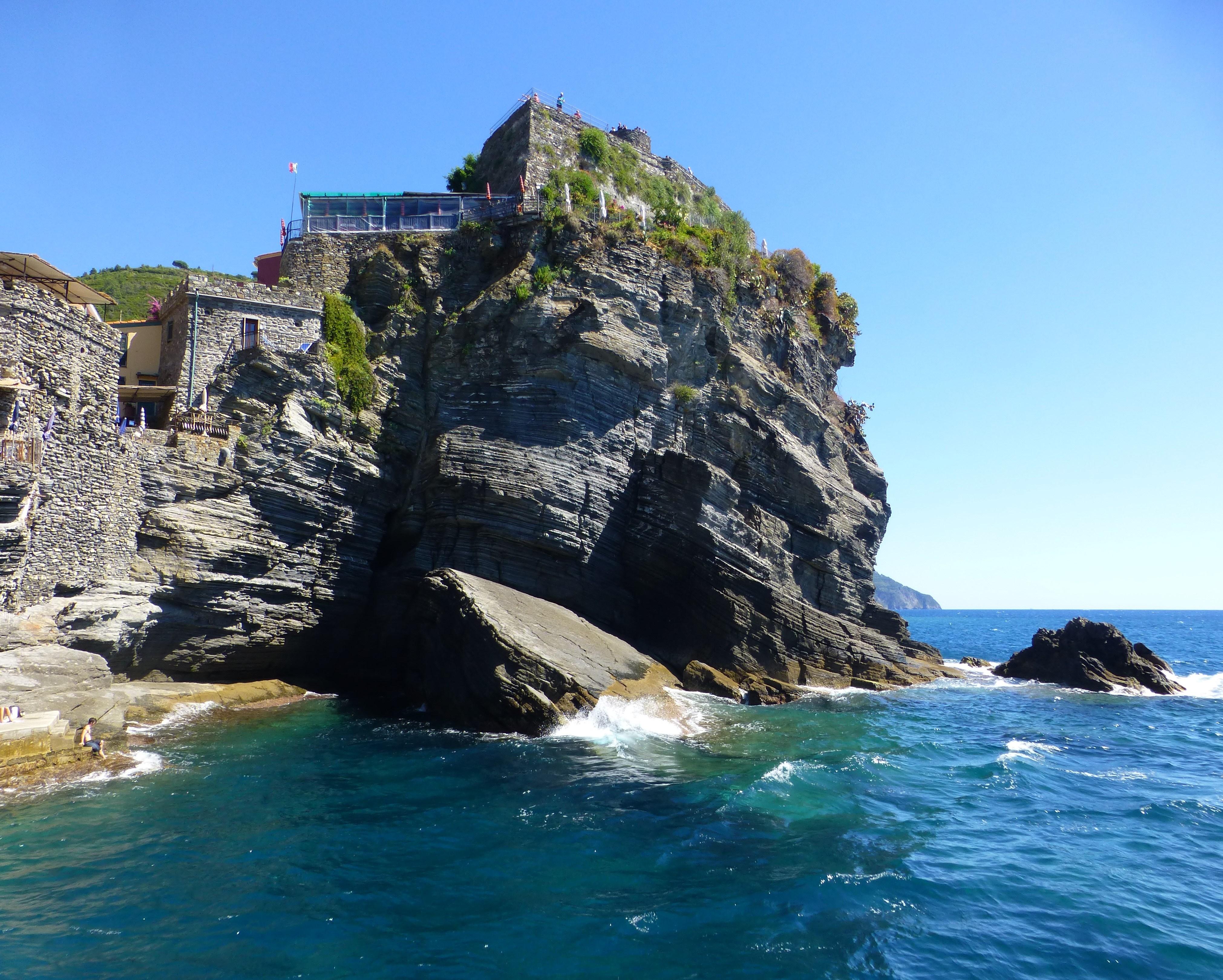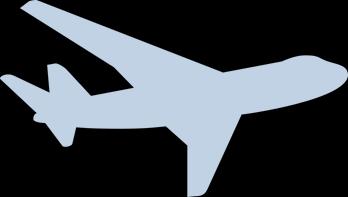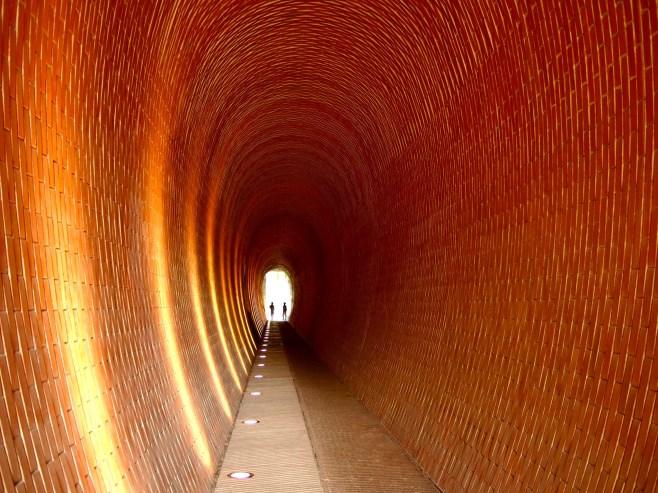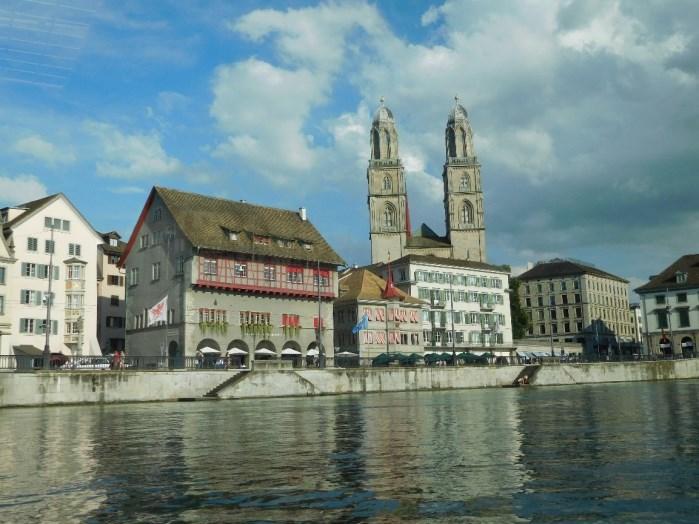















































FEATURED ARTICLE
BULLFIGHTING: IN DANGER OF EXTINCTION IN SPAIN?
Emily Darby discusses the future of one of Spain’s most controversial traditions.
PAGE 13

















































FEATURED ARTICLE
Emily Darby discusses the future of one of Spain’s most controversial traditions.
PAGE 13
CHAIR: KIA MARIE HUNT
SECRETARY: KATYA BROWNE
TREASURER: HENRY WAKELAM
CREATIVE DESIGNER: MARY MCGOWAN
SOCIAL SECRETARY: NATALIE ELLIOT

PUBLICITY OFFICER & DESIGN
ASSISTANT: ZOE LUMSDEN
PROOF READER: SARAH
DANIELS
PROOF READER & GERMAN: RACHEL MORRIS
CURRENT AFFAIRS & PORTUGUESE: CONNOR HAINES
CULTURE: JENNY NICHOLLS
LIFE & STYLE: BEN HILTON
FOOD & DRINK: YANA
PETKOVA
TRAVEL: STEFFI BALLMANN
FRENCH: LUCY HARKINS
RUSSIAN: ALEX CAVES
CHINESE: NINA MA
ITALIAN & CATALAN: OLIVER EDWARDS
POLISH & UKRANIAN:
CHARLOTTE SIMPSON
BULGARIAN: BORIS GENOV
SPANISH: EMILY DARBY

first issue of the year; a special Meet the Team edition!
For those of you that have never picked up a copy before, let me tell you what we are all about…
The UoB Linguist Magazine is an internationally inspired publication, established and produced by students for students. We are the University of Birmingham’s only official multilingual publication, and we provide the opportunity for students to both read and write articles in a variety of foreign languages.











We are always on the lookout for new members, so if you fancy writing for us don’t hesitate to get in touch! Contributors can write in English or any other language, and you don’t have to be an expert; this is a magazine for language learners after all. All content is proofread by a native speaker, so it’s a great way to get feedback about your writing and improve your languages. Plus it looks great on your CV! And as if all of that isn’t incentive enough, joining our team is a guaranteed way to meet likeminded and enthusiastic people who are all united by their passions for everything under the umbrella of language, culture, and travel Drop us an email, or check out our Facebook page for information about upcoming social events, and details on how to get involved.
Edition, entirely in English, as a way to introduce the brand new committee and editorial team. It was such a hit that we decided to bring back the special edition format for you again this year!
Each page introduces you to a member of the team, their role within the magazine, and an interesting article written by them. Check out brilliant articles like Top Tips for Budget Travel by Katya Browne, and Show Racism a Red Card by Henry Wakelam, as well as our French Editor’s article about the Norwegian Fjords and the Aurora Borealis!
Throughout my time at university, I have been a writer, editor, and designer for the UoB Linguist, and the icing on the cake is that I am now Chair of the magazine for my final year. I couldn’t be more excited! We have a truly fantastic team this year, and our readership, as well as general interest in the society, is growing stronger than ever. I think it’s safe to say that you can expect to see bigger and better things from us, both this year and beyond.
One last thing I’d like to mention is all of the hard work put in by our new Creative Designer, Mary McGowan. Not only has she refreshed and enhanced the style of our magazine with her originality and creative touch, but she has also managed to do it despite being on her year abroad in Spain–impressive!
I hope you enjoy delving into this issue just as much as I did, happy reading!
PAGE 3: MEET THE CHAIR
PAGE 4: MEET THE SECRETARY
PAGE 5: MEET THE CREATIVE DESIGNER
PAGE 6: MEET THE PUBLICITY OFFICER AND DESIGN ASSISTANT
PAGE 7: MEET THE TREASURER
PAGE 8: MEET THE PROOF READER
PAGE 9: MEET THE CULTURE EDITOR
PAGE 10: MEET THE CURRENT AFFAIRS AND PORTUGUESE EDITOR
PAGE 11: MEET THE FRENCH EDITOR
PAGE 12: MEET THE ITALIAN AND CATALAN EDITOR


PAGE 13: MEET THE SPANISH EDITOR
PAGE 14: MEET THE PROOF READER AND GERMAN EDITOR


PAGE 15: MEET THE REST OF THE TEAM


If you would like to know more about our magazine, our writers or have comments to make about our articles then feel free to check out our Facebook and Twitter pages or email us. If you wish to read more articles check out our website. We’re always looking for new writers and contributors, so don’t hesitate to get in touch!















After a year abroad in South America, my mind is brimming with memories of stunning locations and awesome experiences. One of the most unexpectedly incredible places that I visited was the town of Bonito, in the state of Mato Grosso do Sul. Although it now has a reputation amongst conscientious travellers as ‘the heart of Brazil’s ecotourism industry’, Bonito still feels like an undiscovered paradise. Here are seven more reasons why you should visit:
1)Snorkelling in an underwater world: Perhaps Bonito’s most famous attractions are its clear, crystalline waters and plentiful, fresh-water coral reefs, which are full to the brim with assorted speciesoffish.Inotherwords,every riverisapristine naturalaquarium. No one that visitsBonitomisses the chance to snorkelinthesemesmerizing underwater worlds.

2)Other water sports: As well as snorkelling, Bonito is host to many locations where visitors can enjoy a range of other water sports, such as paddle boarding, scuba diving, and rafting. My personal favourite is boia-cross; or ‘bouncing along the river rapids on a giant inflatable rubberring.’ (Which is as fun as it sounds!)
3)An abundance of wildlife: Bonito is situated nearby to the Pantanal; a tropical wetlands that covers an area larger than the size of France! A UNESCO World Heritage Site, and home to 124 wild mammal species, 177 species of reptiles and over 400 bird species; it is one of the most biodiverse places on Earth. Regular tours run from Bonito, the journey is quite lengthy (in Brazil, even places that are ‘close’ are really far apart) but it is totally worth it!
4)Caves, rich in history: Another fascinating place to visit is the Gruta do Lago Azul (or Blue Lake Cave) which is a prehistoric cavern, undiscovered until 1924. Not only does it have an impressive array of stalactites and stalagmites, it also has a gorgeous blue lake inside which is so deep that expeditions have yet to reach the bottom. The deepest depth recorded so far is 90 meters, where fossils from around 10,000 years ago were discovered by divers, including creatures such as the Sabre-toothedtigerand giant groundsloth!
5)The most charming of tourist towns: Bonito is a somewhat touristy little town, but because the majority of the tourists that it attracts are mainly concerned with observing but preserving natural beauty, the town has managed to avoid that tacky element that most tourist attractions develop. Sure, there are souvenir shops and travel/tour agencies, but there is still a distinctly authentic, relaxed Brazilian feeling to it. Plus there are some strange and interesting quirks, like the town’s fabulous range of novelty telephone ‘boxes.’
Role: Chair
Currently Studying:
BA Hispanic Studies


Languages: Spanish, Portuguese and Italian Favourite Foreign
Food: Açaínatigela Favourite
Travelling Memory: Sailing up the Iguaçu River to reach its famous falls
6)Delicious food: If I had to describe Bonito’s foodie scene in one word, it would be ‘exotic.’ The local dish, pintado ao urucum, which can be found in almost any restaurant there, is catfish cooked in tomato, onion, coconut milk, and mozzarella - amongst other things - and it is curiously delicious! For anyone that visits the town’s Pantanal Grill there is an opportunity to try all sorts of unusual meat- capybara or caiman steak anyone? (Don’t worry, there’s more normal food too; for the best pizza of your life I recommend the wonderful ‘Pache’ pizzeria.)
7)Versatility: Adventurers are happy exploring Bonito’s rivers and caves, fun-seekers can enjoy the activities on offer, and nature-lovers are sure to be ecstatic in this little haven. Even those that just want to chill out can relax in one of Bonito’s balnearios, or its inland beach. (Yes, there’s an inland beach!) There really is something for everyone.

Travelling on a student budget should not be impossible, even if the thought of hitch-hiking worries you (which it probably should). There are plenty of other great options for supercheap or even free travel. New sites are cropping up every year which are helping to make travel on a budget easier, and you can even meet people and improve your language skills along the way. Most of us are aware of Airbnbthe site is a great option for renting accommodation for a short trip such as a city break. There are tons of different types of accommodation, from studio apartments to single rooms in a host's house or even whole villas with swimming pools! Often hosts are incredibly friendly and accommodating, meeting you at the apartment to show you around- or, as I experienced once in Portugal, even picking you up themselves from the station. Our host in Porto, Fernando, had prepared us a basket of Portuguese custard tarts, local wine and fruit for our arrival. Having access to your own apartment in a new city can be a truly relaxing and comfortable experience, but staying in a house along with your hosts can also be a great way to really engage with the local culture of where you're staying, and they may even invite you to eat with them. Best of all, Airbnb prices are usually much lower than that of hotels or rented apartments- our apartment in Porto cost around €100 per person for an entire week. Another way to save on accommodation costs is with Couchsurfing- where hosts can choose to put you up completely for free. It goes without saying that you need to exercise some caution here- when travelling alone it wouldn't be advisable to stay on a stranger's sofa- but in small
groups this can be a brilliant way to save money. Users are rated by previous guests, such as with Airbnb, and you can pick a host who has plenty of good reviews to put your mind at ease. While studying in France, I spent a weekend in Bordeaux staying with a Couchsurfing host along with friends. It was an excellent way to experience the city without splashing out on an expensive hotel room.





Finally, a great way to save on transport costs is to use a carsharing site, such as BlaBlaCar. I frequently used this in France, where train fares can be as pricey as they are in the UK. One particularly memorable experience was a journey with two friends from Lyon to the Côte d'Azur. The driver, named Teddy, was off to Corsica to become a jet-ski instructor, and had specially baked us savoury cakes for the trip! The 4 hour journey felt like it had passed in a matter of minutes as we chatted away nonstop in French. Ride-sharing is economical (a 4hour journey typically costs you €20-30) , environmentally friendly and a brilliant way to meet local people and spend a few hours chatting, improving your speaking skills in another language and swapping cultural differences. You can pick preferences for your driver, such as whether you prefer a smoking or non-smoking car, how talkative you're feeling and whether you like to listen to music on the way.
All of these budget options require a certain amount of trust and confidence, and it is important to be careful about knowing exactly what you're getting yourself into. However, the money you can save, along with the great cultural and social opportunities they offer, make them totally worthwhile.

Currently Studying: JH English Literature and French
Languages: French and Spanish

Favourite Foreign TV Show: Disparue(French)
Favourite Foreign Song: ManuChao Clandestino(Spanish)

With Ryanair flights from Birmingham to Madrid from a mere £20 this October, Spain’s vibrant capital is an ideal location to consider if you’re in need of a mid-semester getaway. With so much on offer, it can be difficult to know where to start planning your trip: here’s my pick of what not to miss on a student budget.






Languages: Spanish and Portuguese

Tapas: You could find excellent tapas in Madrid with your eyes closed. If you’re new to tapas or not sure what to choose, opt for somewhere with a mixed plate to share on offer to give you a taste of everything. If not, calamari, patatas bravas,croquetas and tortilladepatataare all delicious dishes to go for. Dishes will cost around €5 each, and three or four plates are usually good for two people, but watch your vocab: whilst a tapa is a small portion, a ración is a largerdishanda pincho is likely to be just a mouthful.

Art galleries: Madrid is home to many world famous art galleries and museums, including the huge Museo Nacional del Prado, which holds works by de Goya, Titian, Bosch and Rubens amongst many others. For an outing that’d last all day, pick up some food from a local cafe: The Prado is close to the Parque del Buen Retiro, where acres of green parkland make up the perfect picnic destination. If you’re more into modern art, try the Museo Nacional de Arte Reina Sofia, which holds extensive collections from Picasso and Dali, including Picasso’s masterpiece Guernica Remember your student card for cheaper entrance prices!
Markets: is one of Madrid’s best markets, with a lively, buzzing atmosphere and food and drink of all kind on offer from stalls all around. El Rastro is another great market selling all sorts of clothes and housewares, but plan your visit carefully as it is only open on Sundays.
Flamenco: Although flamenco is traditionally performed in southern regions of Spain, the madrileñan flamenco scene is growing in response to tourist demand. Even if traditional dance forms are not usually your thing, the passionand intensityofflamencoperformersare definitely worth a watch. Shows will typically take place in the evening, lasting one to two hours, and may be accompanied by a drink or an evening meal. Whilst some shows can be quite expensive, there are deals to be found: try the Mercado de San Miguel (see below) for cheaper tickets.
Cable car: For something a little different, try taking the cable car (teleférico) and gain adifferentperspectiveof Madrid by seeing it from the air. It’s a walk away from the centre of Madrid, but on your way you pass by the Palacio Real, which is an impressive sight to see itself. A return ticket (un billete de ida y vuelta) will cost just €5,90 and the cable car takes you out to a zoo and a theme park, although if you don’t fancy either of those the journey itself is well worth the trip.
Aside from the numerous activities it has to offer, Madrid’s charm is enhanced by its pleasant, relaxed atmosphere. The locals are friendly and willing to help, and a modern multicultural attitude means visitors are welcomed to the city with open arms. If you’re looking for a laid-back, cultural and enjoyable trip, give Madrid a go. ¡Buen viaje!

Every year in August, the city of Edinburgh is transformed with a myriad of pop-up festival venues, creating the vibrant atmosphere of the Fringe Festival. This summer I volunteered at the Pleasance, one of the biggest venues there, and was able to call this remarkable city home for 5 weeks.

Role: Publicity & Design Assistant









Currently Studying: JH Music and Modern
Languages
Languages: French and German
Favourite Foreign Film: LesIntouchables
Dream Holiday Destination: Vienna
The Edinburgh Fringe Festival is the world’s largest arts festival, showcasing theatre, comedy, dance, circus, cabaret, musicals and spoken word, alongside exhibitions in galleries and multiple street performances. The city is a centre of astonishing creativity. At the Pleasance, I joined a team of 200 volunteers. We arrived a few days before the start of the festival to set up the Pleasance Courtyard and Pleasance Dome venues. Working with 30 others in the Front of House team, each day of the festival involved organising queues and checking tickets. Volunteers at the Pleasance could sometimes see shows, with free entry on a staff pass. By the end of the month, I’d been lucky enough to see 51 shows, most of them for free. Volunteering at the Fringe can be an incredible way to see a huge number of performances, whilst on a student budget!
The festival buzz in the Pleasance Courtyard and throughout the city is infectious. In all Scotland’s ever -changing and unpredictable weathers, rain or shine, the atmosphere is one of excitement and opportunity. You’ll see endless walls of posters and flyers advertising shows, as well as flyerers and performers publicising their shows at venues and in the streets of Edinburgh. Spontaneity is an important part of the Fringe, and by taking a leaflet from a flyerer, having the open-mindedness to try any type of show, you could discover a new area of performance you might actually love. Word-of-mouth is integral to the success of shows at the Fringe, and in the lively, friendly
Edinburgh city: a centre of astonishing creativity
Edinburgh
atmosphere everyone wants to know which shows you’ve seen or what you’d recommend. Talking to people in queues and making friends across the city with people from all over the world is all part of the Fringe experience, creating a unique sense of Fringe Festival community.
The streets of Edinburgh are bustling with street performers, flyerers, and performers promoting the shows. However, you don’t need to look far for a bit of relaxation and countryside-esque escapism. Green spaces are rarely out of sight in Edinburgh. Approximately 15-20 minutes’ walk from the city centre, you can find Calton Hill, featuring the National Monument of Scotland and beautiful views out towards Leith, whilst on the other side of the city you can venture up Arthur’s Seat. With the summit only 30 minutes from the bottom of Edinburgh’s Royal Mile promenade, it’s a perfect way to see fantastic views of the city. But you don’t even have to go up a hill or a mountain to explore green spaces - Edinburgh’s Princes Street Gardens are a mini-escape from festival frenzy, and a short bus ride from the city can take you to Edinburgh’s beautiful Royal Botanic Gardens.
In the final days of the Fringe, and as the team of volunteers packed up the Pleasance venue, we all said a fond farewell, but with determination to return to the city and see one another again, having all caught the Fringe Festival ‘bug’. The festival somewhat consumes the city during the month of August, and quite suddenly, almost in the blink of an eye, it all disappears. However, the undercurrent of festival buzz remains, waiting to be unveiled again the following year, for the Fringe Festival 2017.
When I went to Bologna for my year abroad there were a few things that worried me: the heat, sounding like an idiot for the first few weeks, and having to check for lactose products in restaurants. There was, however, one thing I was very excited about, and that was being able to go and watch some Italian football.
The end of the season promotion of Bologna FC and the following transfer window got me very excited about twiddling my spaghetti round a fork while watching the teams with the most unoriginal nicknames on TV. I would also be able to walk to watch a top league game if it took my fancy at Bologna’s Stadio Renato Dall’Ara.
This year’s transfer window left my pasta (without cheese) getting cold on the table. Firstly, Stevan Jovetic, from the beautiful team that is Manchester City, was becoming a new attacking member of Inter Milan, which immediately meant I had my favourite Italian team chosen for the duration of my stay… until he got injured over and over again. Secondly, Bologna was acquiring the services of one Mattia Destro from Roma, who was always present on my Fifa Careers - not interesting for most people, but very exciting for me. The best part was that a Bologna striker, Acquafresca, lived on my road. He was my neighbour! So, pumped and
ready, with plans of patrolling my road after the game until a fancy car appeared, I went to watch my first football game in Italy, Bologna vs Sassuolo.
time. Football is nothing without the fans, except these fans… these fans can stay at home.
Defrel is a French player of colour, but as you can guess, the subject of the racism was not his nationality. Vile comments which need not be repeated were met with cheers of approval, laughter and more abuse. I was completely shocked and disgusted. Despite having been in Italy for two months, I didn’t know what to say to these racist fans at all, especially as they were drunk and much bigger than me. I left about five minutes later, vowing never to go back to that stadium again.
In the Premier League we are lucky enough to witness the whistle against racism before many games. Bringingattentiontoracism in football and how it should not be tolerated has greatly reduced the levels of racism in our country. In addition, the idea of “blowing the whistle” on racist remarks provides people with the reassurance if they report someone, they will be listened to.
European football does not have this reassurance because combatting corruption in football, paying off referees and bribing FIFA officials has the highest priority. However, without what is meant to be a European effort, how will Italian football change?

 (Credit: https:// commons.wikimedia.org/wiki/ File:Mate-gourds.jpg)
(Credit: https:// commons.wikimedia.org/wiki/ File:Mate-gourds.jpg)
The stadium was stunning and open with mountains jutting out behind. The fans seemed great: they had more flags than the EU, and were screaming out some great chants. Everything was going well, my new neighbour wasn’t playing, but Destro was.
Suddenly, the game changed. One of the Sassuolo players, Grégoire Defrel, did a nasty foul on a Bologna player, and I witnessed the most racist verbal abuse I had heard in a long
Racism ruined my experience of Italian football, but I can’t imagine how it must ruin the experience of fans of colour and players like Defrel, who have worked so hard just to be treated inhumanely. I hope in the future the Italian Football Federation can make a real change to ensure that this racism doesn’t continue.






Currently Studying: BA Modern Languages
Languages: French, Italian and Spanish

Favourite Foreign City: Florence, Italy
Favourite Foreign Sports Player: Jesus Navas (Spanish)



This summer I got a full-time job as an intern in a PR agency. The job was fun, useful and helped me learn so much, but in all honesty, adult life is truly exhausting! Fortunately I went on a family holiday to Spain, around Mazarrón on the Mediterranean coast, which was a lovely siesta from responsibility and a chance to explore a beautiful part of the country.
If you’re looking for fantastic weather, I can certainly recommend Mazarrón in July. The constant sunshine warms the shallows to bath temperature and makes everyone comfortably dozy, while a breeze by the coast prevents the heat from becoming unbearable. Head to one of the many beaches to sunbathe, relax, and enjoy the climate as much as possible. The region has a range of different beaches to explore, from more popular ones like the Puerto de Mazarrón, to more remote strips of sand with only a few sun-umbrellas breaking up the horizon.
The traditional food and drink is unsurprisingly delicious, and we feasted on tapas, churros, and sangria throughout our stay. I also really enjoyed the Bulgarian restaurant we went to on our first night; Bulgarian cuisine turned out to involve kebabs made of large, juicy meat chunks fixed to what I can only describe as a childsized spear. While those in the tourist trade generally speak English, using even your most basic Spanish language skills will earn you a lot of brownie points when it comes to communication.
It wasn’t all beaches though: we also explored the history and culture of the coastal city of Cartagena during our stay. Cartagena is a beautiful city, although its port is a popular destination for Mediterranean cruise ships, and hundreds of tourists flood the pedestrianised streets every day. The Roman theatre of Carthago Nova has been very well preserved, considering construction
began on it in the 2nd century BC, and today the impressive structure forms one of the city’s landmarks. The museum attached to the amphitheatre also details the city’s past as a prominent Roman port.



The Castillo de la Concepción was also definitely worth the trek up the hill. Beautiful and well-maintained gardens frame the paths up to the castle, and, arriving at the top, you are rewarded by a stunning panoramic view of the harbour and surrounding countryside. You could pay to take a lift to the top of the hill, but I found the climb rewarding and pleasant in itself, as well as a way to save a few euros. The castle itself was quite interesting but no longer a recognisable fort structure, and certainly it was the view rather than the castle and museum which took my breath away.
I often felt like we were much further away than Spain, as the arid, empty landscape that started just a few miles from the coast was more reminiscent of a desert in Arizona than the green Europe I am more familiar with. On returning to the UK, I was unsurprised to learn that many ‘spaghetti Western’ films, like The Good, The Bad and The Ugly and Once Upon a Time in the West were filmed in the Tabernas Desert in Almeria, southern Spain, rather than in the US.
Role: Proof Reader

Currently Studying: JH English Literature and French
Languages: French and Spanish







Favourite Foreign Food: Spanish tapas
Favourite Foreign Artist: Robert Delaunay(French)
The region of Murcia is a peaceful gem, which avoids the overcrowding of popular tourist resorts in favour of relaxing open spaces. It provided me with the rest I needed, but that is not to say it is without value as a cultural destination. There is plenty to see, do, and eat around Mazarrón, in the town itself, the costal ports, and in nearby Cartagena.


At the heart of Europe, the stunning city of Prague has a wealth to offer all visitors, no matter what you’re interested in! I visited Prague with a couple of friends in August, at peak tourist season – which meant that it took us 20 minutes to cross Charles Bridge (Karlův most), we were crushed in crowds around the Astronomical Clock, and we repeatedly had near-misses with tour groups of segway riders. While the main tourist attractions are of course worth seeing, there is also plenty to see away from the crowds. These are just a few places that we came across while exploring the city.
The castle is one of Prague’s most popular tourist destinations, but you shouldn’t miss a real gem hidden away in one of the moats: a tunnel designed by the architect Josef Pleskot. Approaching from the castle bridge on the north side of the cathedral, you can wander down into the Stag Moat (Jelení Příkop), which has been transformed into a picturesque area of fields and trees. The tunnel, which follows the route of the stream through the moat, is made of arching brick patterns and is lit up atmospherically on one side. If you go through the tunnel and continue walking, you can then climb up into the gardens of Queen Anne’s Summer Palace, where there is a great view back to the castle.

In Velkopřevorské náměstí, opposite the French embassy, there is a graffiticovered wall that is being continuously renewed with artwork and messages of peace. It began in 1980, as a tribute to John Lennon following his murder. Lennon was a pacifist hero for many young people in what was then Czechoslovakia, and despite the best efforts of the authorities to paint over the messages and prevent people from adding more, the wall became a rallying point for political activists and an act of defiance against the Communist regime. Today it is still an iconic place and the practice of adding to the wall is no longer prevented.
Cubist Lamp Post: Designed by Emil Králíček, this is no ordinary street light: it is the world’s only Cubist lamp post. (Remember that fact; it may serve you well some day.) Find it tucked away in Jungmannovo náměstí, near Wenceslas Square (Václavské náměstí).
References to Kafka: Franz Kafka is one of Prague’s most famous figures, and it’s fair to say that the city is pretty proud of him. There are many tributes to him around the city –not least the fantastic experiential museum on Cihelná, to the north of Charles Bridge, which is definitely worth visiting. Outside the museum is also a great kinetic sculpture of two men peeing, by the famous and often controversial David Černý. Just through the archway next to the Cubist lamp post, we stumbled on another one of Černý’s creations: a giant silver sculpture of Kafka’s head that rotates in rows, his face distorting and re-forming. Apart from these large ‘official’ tributes to Kafka and his work, I particulary loved the occasional references to him such as this street art stencil of a jackdaw (‘kavka’ is Czech for ‘jackdaw’).

There was so much to see in Prague, and I feel that I’ve only just scratched the surface of the city. I’m definitely going to go back as soon as I can!
Role: Culture Editor






Currently Studying: BA Modern Languages
Languages: German and Spanish

Favourite Foreign Film: Jagten
Dream Holiday Destination: Iceland
For some, an impossible dream come true –for others, an unthinkable nightmare turned reality. Britain is heading for the EU’s exit door, and the road out is a long and complicated one. So how does it work? How does a country actually ‘leave’ the European Union? Suffice it to say, this article would have been much shorter in the event of a Remain vote, which most polls predicted. But unless you’ve been living under a quite colossal rock, you will know that it didn’t exactly turn out that way. The British people upset the form guide, and the political world was turned upside down. A new Prime Minister, the Labour Party in civil war, and deep divisions within the UK. Oh, and at some point, we actually have to get around to leaving the EU.
Studying: BA Modern Languages
Languages: French, Spanish, Portuguese Favourite Foreign Food: Andean Tree Bark



Favourite Foreign Sports Team: São Paulo FC
So let’s break down what lies ahead for Theresa May’s government as we prepare to leave ‘the Bloc’…





How to leave the European Union, a step-by-step guide: Step 1: Have a plan. When beginning a seismic political shift, bringing vast implications for generations to come, being prepared is usually a good idea. The Government needs to work out what we want to get from the negotiations. This includes working out whether we want to be part of the EU’s common market, and which perks of EU membership we might want to try and keep, such as the Erasmus scheme or European Health Insurance Cards. It also means working out which elements of EU law we want to retain, and which we don’t.
Step 2: Trigger Article 50 of the Lisbon Treaty, and begin negotiations. This is how a country formally declares its intention to leave. It triggers a 2-year window, in which Theresa May will work with ‘the Bloc’ to establish the terms of our exit, and our future relationship with the EU. There’s a lot to do and not much time to do it – though the timeframe can be extended, if all EU nations agree to it.


Step 3: Arrange international trade deals. Our current trade deals were signed by the EU, and won’t apply to us after we leave, so it’s important to get some agreements in place beforehand. Australia has already declared interest in signing a free trade deal with the UK after Brexit, but the government will be keen to get some more favourable deals done before we’re on our own.
Step 4: A ratifying referendum? It’s possible, although unlikely, that the government could call a referendum to either accept or reject the terms negotiated with the EU. Numerous MPs are calling for it, but the government appears reluctant.
Step 5: Formally close the process, and enact prearranged trade deals. The end of the line. After the 2-year window closes, Britain finalises its trade deals and any agreements negotiated with the EU, and is no longer a member. EU treaties no longer apply to the UK, and a new UK-EU relationship begins.
Only 5 steps? It can’t be that hard… can it?
Planning and executing this will be a huge task. No country has ever left the EU in its current form, so we have no example to follow. What Theresa May might ask for and what the EU is willing to give may be very different things. The EU will want to remain friendly with the UK, but won’t want to make leaving look attractive to other countries. Serious compromises will be needed on both sides, but the UK’s future prosperity is at stake here. Whether or not Brexit was the right decision will be unclear for many years.
Norway, frequently described as the most beautiful country on earth, offers wonderful coastal views complete with glaciers, green-blue lakes and steep cliffs either side. This Scandinavian region is made up of around 1,100 fjords including the Svalbard islands, which are one of the main attractions for tourists visiting the country.
Role: French Editor

Currently Studying:
Cruise companies such as P&O Cruises and Royal Caribbean make regular voyages to the fjords and often use tender boats to allow passengers access to the coast, because of the narrow width of the fjords’ lakes. The chosen ports normally include Bergen, Stavanger, Olden and Geiranger, and offer a variety of activities for visitors such as shopping in the beautiful towns, glacier tours and cable cart rides to the top of the steep cliffs. Postcards from the fjords will normally depict the overwhelming greenery of the towns and brightly coloured authentic wooden cabins.

JH English Literature and French
Languages: French
Favourite Foreign
Food: Baked Camembert
Favourite Foreign
Sports Team:



MontpellierHéraultRugby
The lack of modern buildings in these fjord towns points to the relatively small local Norwegian population: there are relatively few people moving to fjords such as Geiranger and Olden. This small number of local residents is made even more apparent with a visit to the little white wooden chapels in Olden, where the grave stones comprise of four or five of the same family names as well as some variants of spelling. In contrast to these smaller ports and towns, cities such as Bergen and
population of London, which is around eight million! There are many Norwegian delicacies that should be tried during a visit to this beautiful coastal region and each port or town offers something a little bit different. The most common delicacy seen on restaurant menus will be fish, particularly salmon in the form of Røkt Laks smoked salmon) or Gravlaks(dry cured salmon with a blend of salt, dill and sugar). Fish markets are the main feature of ports such as Stavanger and Bergen, which generate a lot of business for the ports. Another dish that is to be expected of a country with a colder winter climate is Fårikål - a hearty stew containing mutton and cabbage and often including salt and peppercorns for flavouring. Fruit ciders and fruit beers such as Krunesider (sourcing apples from Hardanger) in Bergen are also very popular in Norway. Stereotypically Norway is thought of as a cold and icy region, because the snow that covers parts of the country during the winter makes it an ideal skiing destination. However, the Norwegian weather is actually very irregular, and can range from temperatures of around 4 degrees to temperatures well below freezing. The same goes for Norway’s summers, which are known for the long bright days that can be experienced further north, beyond the Arctic Circle.
The most famous attraction for tourists visiting Norway is the Northern Lights (the aurora borealis), which are seen at night as the northern lights belt hits Northern Norway in the Lofoten Islands. The spectacular green and violet lights are a little bit further north than cruise ports such as Olden and Geiranger, and therefore it is perhaps better to make an individual trip if you want to make the most of the beautiful sky views!
Stavanger have a population of 270,000 and 130,000 respectively. Oslo, the Norwegian Capital, has a significantly greater population of 660,000, with the overall population of Norway being around five million. However, this number seems a lot less significant when compared to the grand





Norway is an absolutely beautiful country often overlooked by British holiday makers, and is well worth the visit if a thrilling experience in the Norwegian mountains takes your fancy!

The fjords: overwhelming greenery and brightly coloured wooden cabins


During our final year of university and the long periods of procrastination in the library that come with it, my girlfriend (the Travel Editor of the Linguist) and I were planning where was best to spend the remains of our student loan, in order to celebrate the end of university. We wanted to do something a bit different and so, after speaking with one of our lecturers, we decided to cycle along the Danube River from Passau, Germany, to Vienna, Austria.
The Danube is Europe’s longest river, if you ignore the Volga in Russia. It passes through ten different countries, starting in Germany and emptying into the Black Sea. This 320km cycling holiday may sound a little daunting to anyone who hasn’t sat on a bike for longer than a couple of hours at a time but don’t let this put you off; this is the ultimate cycling holiday for non-cyclists. Firstly, the whole route is very straightforward (you just follow the river and there are frequent signs) and very flat, with almost no inclines - we probably came across two hills where we had to dismount and walk up. Secondly, the wind direction is usually eastwards, which kindly gives you a boost every now and again. The other good thing is that, if you organise the trip yourself, you are in charge of how far and how long you cycle each day; you don’t need to book accommodation until the night before. There are loads of hostels or B&Bs en route that you can phone up on the day and often find a room for around €20. There are several bike rental companies in Passau and the majority of them offer a pick-up service in Vienna for about €25 per bike (the bikes are €8 each day to rent). Just to be clear, previous to our cycling adventure, my girlfriend and I hadn’t done any training and have little sense of direction, however once we got used to
sitting on a bike for several hours each day – I have to admit that the second day bum pain was intense – then it really was easy-going and highly enjoyable.
Hopefully, now that I’ve settled your nerves in relation to the difficulty of the holiday, let’s talk about the route itself. We flew to Munich, Germany, where we spent a few days a few days fuelling up on Bavarian food and beer before getting the two-hour train to Passau. Passau’s nickname is the City of Three Rivers, given that it’s the point at which, surprisingly, three rivers meet: the Inn from the south, the Donau (Danube) and the Ilz from the north. This is a truly beautiful and serene city, and really sets the standard for what is to come along the journey. We averaged about 60km a day, taking our time passing through all the different Austrian villages, towns, and cities, such as Schlögen (see picture below), Linz, Grein, Melk, Wachau and Tulln. The Austrian countryside is immaculately green, with a huge variety of wildlife (we even saw a snake!) and taking our time cycling through this beautiful country was definitely my favourite part of the holiday.
Role: Italian and Catalan Editor

Currently Studying: BA Modern
Languages with Business Management





Afterwards, we spent a few days in Vienna and then got the train to Bratislava, Slovakia, an interesting, inexpensive city with a great vibe and awesome food – they love their sheep cheese pierogi! We then continued our journey to our final destination of Budapest, Hungary, another buzzing city that has done really well to balance its cultural heritage with its modern status as a member of the EU.
Languages: Spanish, Italian and Catalan
Favourite City: Bologna, Italy
Dream Holiday Destination: Patagonia, Argentina
If you do decide to give this cycling holiday a go, I recommend the book “Danube Bike Trail 2.” It gives you all the information you need on the route and the history of the river.

Pamplona, 5th July 2016: It is a Tuesday in the northern city of Spain. Thousands of people flood the street and the atmosphere is electric. It’s easy to imagine that the whole of Spain is here in Navarra, charged with adrenaline and ready to celebrate a once-in-a-lifetime experience, many having travelled a considerable distance to bask in culture. While the sky may be devoid of clouds, the sun does not manage to dissipate the political storm looming over this fiesta. Perhaps it is not a surprise to see blood at the San Fermín festival but there is something disconcerting about this scenario. Fifteen people, covered in blood from head to toe, stand silently; the bells toll, as if on cue. They bear placards stating their motives: they want ‘San Fermín sin sangre’ – San Fermín without blood.
The blood and the silence of the protestors are a haunting reminder of something that has become an inevitable part of bullfighting culture: death. On 9th July, just days later, this fear was realised. Victor Barrio, a well-known matador, was gored to death on live television, while spectators helplessly looked on. Was this the moment in which Spanish patriotism transformed into national outrage? With the number of tragic cases piling up – such as the incident in Alfamén, where a young girl was left in a critical condition after a bull escaped during an annual encierro – many regions of Spain are seriously considering prohibition. The region of Catalonia has already taken this measure.
Banning the corrida de toros in Spain, necessary or a step too far?

More municipalities are in the process of prohibiting the bloody tradition, including Alicante and Valencia. Juan Ribó, the mayor of Valencia, seems to be on the side of animal rights groups, refusing to subsidise events promoting the killing of bulls. The recent trend dominating the agenda of local Spanish politics is partly a result of the emergence of the leftist Podemos party, which wants Spain to keep up with the times, rather than being frozen in an era that prioritises tradition over ethics and equality. The public

Currently Studying: BA Modern
Languages
Languages: French and Spanish
Favourite Foreign TV Series: Gran Hotel
Favourite Foreign Band: Stromae





voice seems to respond, loudly, in agreement that cruelty should not serve as entertainment. Model Elen Rivas stated that ‘a few people [continuing] to support the killing of bulls is something that most of Spain is ashamed of’. However, the clout that these opinions hold is disputable and in many ways, it’s hard to imagine a Spain without bullfighting. It seems as etched in their culture as it is painted on innumerable novelty mugs. This is not only a permanent reminder of how significant the sport is to Spain’s identity, but also of how lucrative it is to Spain’s tourist office. The bull symbolises Spain, the tenacity of the people, and their love for tradition, something that most of heavily modernised Europe cannot hold a candle to. This is what attracts Spain’s most loyal foreign aficionados. Which leaves us asking…
Realistically, will Spain say goodbye to bullfighting for good in the coming years?
This year’s death was the first since 1985. Horror stories from the bullring are not news in Spanish media. Matadors are decorated heroes; it is not unusual to find a double spread dedicated to their success. While there is a lot of opposition - only 29 percent of Spaniards are in favour of the blood sport – it is the government, not the people, that protects it from extinction. A parliamentary law recognises bullfighting as cultural heritage, making it almost impossible to ban the sport in some places.
Despite authorities’ efforts to salvage it, the tradition may disappear by itself. Spain’s unemployment status is desperate. Extortionate tickets and a lack of ethics attract a generation that no longer reflects modern Spain, which is diverse, moral and equal. 79 percent of Spaniards have not attended a bullfight in the last five years. In a country bursting with cultural traditions that are less deadly and more inclusive, there are fewer and fewer reasons to defend the unnecessary killing of bulls.








Having spent the last 10 years learning German, I felt I could not spend my year abroad in Germany without visiting the other major countries in which German is spoken: Austria and Switzerland. A few days before I flew home to England, my sister and I visited Switzerland’s largest city, Zurich. Despite being there for less than 48 hours, we were able to experience so much of the city. Here are some highlights of the trip, and a few tips for anyone travelling to Zurich!
Exploring Bahnhofstraße and the Altstadt (Old Town)
Known for its banking and celebrated Swatch watches, Switzerland definitely exudes an air of wealth. It also boasts an excellent quality of living, with Zurich placing second on Mercer’s 2016 “Quality of Living Index”. We noticed many indicators of this during our trip, one of which was the quality of water. Dotted throughout the city are 1,200 decorative drinking-water fountains, from which you are not only allowed but are encouraged to drink! Zurich – and the River Limmat flowing through it – is extremely clean and picturesque, but it is also culturally rich, with many historical buildings, churches and museums.
While the Bahnhofstraße is bustling with well-known and luxurious brands, there are lots of small shopping streets winding through the Old Town, where souvenir shops selling cheap piggy banks emblazoned with the Swiss flag are directly next door to pricey boutiques selling jewellery. Despite knowing that Zurich would be expensive, I have to admit that it was startling to see a £12,000 necklace in a
shop window, and for it not to be the mostexpensivepiece there!
ClassicSwisscuisine
Role: Proof Reader and German Editor
Currently Studying: BA German Studies


Languages: German
Favourite Foreign City: Munich, Germany
Top Travel Tip: Roll clothes not fold!

Switzerland offers a unique dining experience, which is said to combine French, German and Italian cuisine. Specialities to look out for in Zurich eateries include the famous cheese fondue, raclette (a melted cheese dish), Rösti (fried potato cakes) and Zürcher Geschnetzeltes (veal strips and mushrooms in cream sauce). For those looking to marvel at pastries, cakes and chocolate, Confiserie Sprüngli is absolutely unmissable. The first store was opened in Zurich in 1836, and Sprüngli has since blossomed into a high-street favourite, with fourteen shops around the city. Chocolate is crucialto the food scene – after all, Swiss chocolate is world renowned! However, prices in restaurants and cafes can be outrageous (be prepared to pay the equivalent of £4.76 for a basic latte in a Zurich Starbucks!) If looking at menus here makes you flinch, one tip would be to visit the hot food counters in the Coop shop near the Hauptbahnhof (main train station), where you can weigh and box up food to take away.
Probably the best purchase we made (aside from a fabulous wooden cow) was the “ZürichCARD”. Only £17.50 (CHF 24) for 24 hours, this card offers unlimited 2nd class travel on public transport, free or reduced admission to museums, 10 -20% discount in certain shops and many more discounts. After exploring the Old Town on foot on the morning of the first day, we bought this card at around 3.30pm, so that we could use it on both days. We also used the ZürichCARD to travel to the Uetliberg, a local mountain, where you can get fabulous views of the city, and for boat trips on the river and the lake.
The 1.5 hour round-trip on Lake Zurich was probably the most relaxing part of our time here, as we had lunch and just enjoyed the view around us. I can honestly say that the best way to see Zurich is by boat. Weather permitting, of course!
CHAIR:
Kia Marie Hunt
SECRETARY: Katya Browne

TREASURER: Henry Wakelam
CREATIVE DESIGNER: Mary McGowan
PUBLICITY & DESIGN ASSISTANT: Zoe Lumsden


SOCIAL SECRETARY: Natalie Elliott








PROOF READER: Sarah Daniels
PROOF READER & GERMAN
Rachel Morris
CURRENT AFFAIRS & PORTUGUESE

Connor Haines


TRAVEL: Steffi Ballmann


CULTURE: Jenny Nicholls
LIFE & STYLE: Ben Hilton



FOOD & DRINK:
Yana Petkova
FRENCH: Lucy Harkins
SPANISH: Emily Darby
BULGARIAN: Boris Genov
ITALIAN & CATALAN:
Oliver Edwards
RUSSIAN: Alex Caves

CHINESE:

























Nina Ma
POLISH & UKRANIAN: Charlotte Simpson
